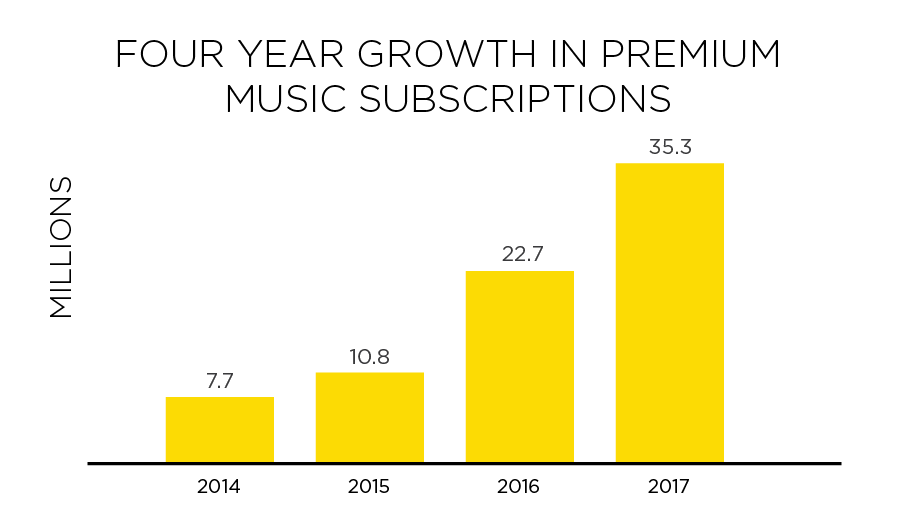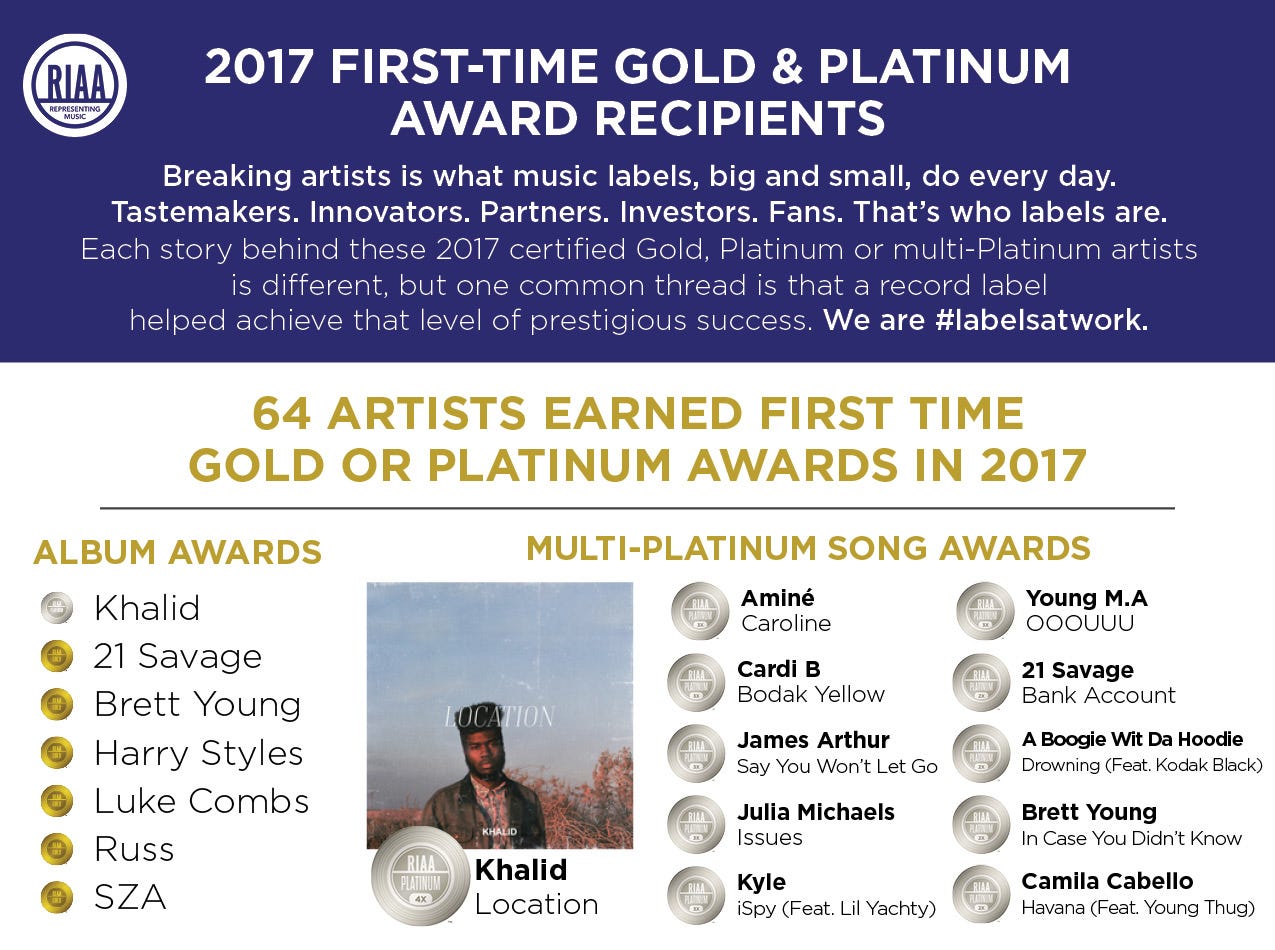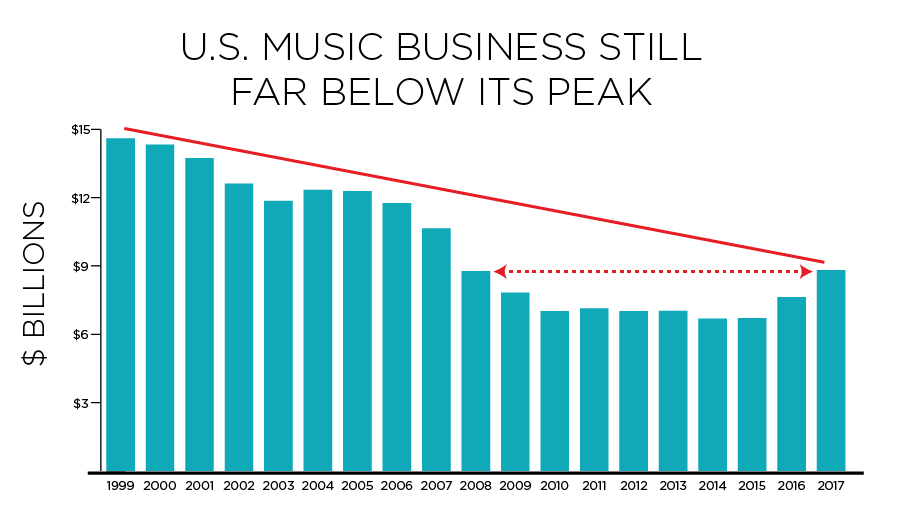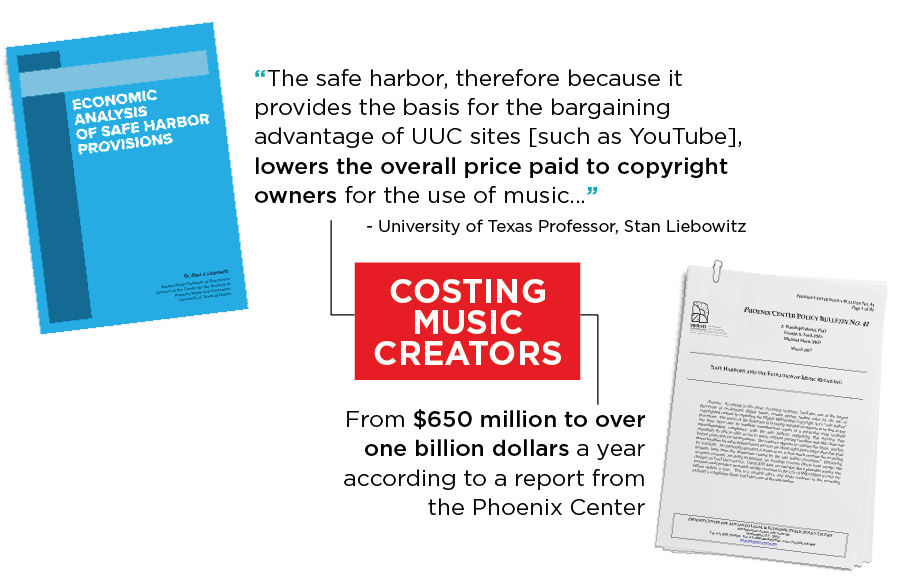Music Is “On The Move” says RIAA Chief Cary Sherman
A new RIAA report shows that the recorded music business in the U.S. grew for the second consecutive year in 2017, driven largely by streaming revenue. RIAA chief Cary Sherman dug into the numbers to share what they means, including some areas that need improvement.
________________________________
By Cary Sherman, Chairman & CEO of the RIAA
The American recorded music business grew in 2017, for the second consecutive year, as music fans continued to subscribe to streaming services, which counted more than 35 million U.S. subscriptions and drove a 16.5% increase in retail sales to $8.7 billion.
My colleague Josh Friedlander walks through all the data in more detail here.
Subscriptions Drive Music’s Recovery
Music is a digital business, with more than 80% of overall revenue stemming from an array of digital platforms and services.
Streaming music services delivered $5.7 billion in revenue. Paid music subscriptions generated the lion’s share of that amount — surpassing $4 billion for the first time — and now represent the largest recorded music format by value.

#Labelsatwork
More than any other creative industry, music companies successfully transformed themselves ahead of the transition to streaming, all while forging stronger relationships with their most important partner: the artist.
This remarkable re-invention didn’t happen by accident. It is the result of years of painstaking work by record labels who continue to strengthen the teams and systems necessary to support an artist’s ambition, all while working closely with hundreds of digital platforms to bring music to fans in new and innovative ways.
Music labels around the world invest more than $4.5 billion a year in discovering new artists, protecting their work and helping them find their audience and success. The Internet offers countless opportunities to distribute music, but with millions of songs and tens of thousands of albums released annually, it’s increasingly difficult for artists to break through and be discovered by fans. Record labels help artists stand out and elevate the music to the next level, whether it’s an established act or an up-and-coming new artist.

Fragile Recovery Continues
We‘re delighted by the progress so far, but to put the numbers in context, these two years of growth only return the business to 60% of its peak size — about where it stood ten years ago — and that’s ignoring inflation. And make no mistake, there’s still much work to be done in order to make this growth sustainable for the long term.

Growth is of course welcome, for many reasons, but especially because it will result in more investment in artists and music.
However, we continue to operate in a distorted marketplace, replete with indefensible gaps in core rights, inhibiting investment in music and depriving recording artists and songwriters of the royalties they deserve.
The playing field remains unfairly tilted at the expense of creators and digital music services, resulting in a “value gap,” the gulf between the amount of music being consumed and the compensation that platforms return to music creators for exploiting the music. The economic consequences are real and increasingly documented by leading academics.

Even as the shift to streaming powers the industry’s recovery, the digital migration also exposes the growing gap in our core rights — because, under current laws, not all platforms pay artists and labels fair rates reflecting market value for the use of their music. This includes terrestrial AM/FM radio, which inexplicably pays artists and labels nothing for the commercial use of their music, and SiriusXM, which pays under a below-market rate standard set more than 20 years ago when Sirius and XM were mere start-ups instead of the merged, wildly successful satellite service it is today.
Reform Legislation Advancing
In Washington, Congress appears poised to advance a package of reforms that will modernize music licensing for the benefit of songwriters, recording artists, producers and digital music services alike, which we enthusiastically support. In addition to ensuring that all platforms pay based on the same market-based rate standard, a vital piece of that bipartisan legislative package — the CLASSICS Act — would correct one of the most glaring injustices in the streaming music economy: Because of a quirk in the law, legacy artists who recorded music before 1972 are not guaranteed royalties under federal copyright law when their music is played on digital radio outlets. The proposed legislation would ensure that all recordings are treated the same — and countless artists have encouraged Congress to enact this essential reform.

Everywhere we turn, music surrounds us. It lifts us up, it heals us, it inspires us, it is the soundtrack to our loves and sorrows, the anthem for our protests, who we follow on social media, the soothing friend who helps narrate our day. We are excited by the prospects for a better future, but also humbled by the work yet to be done.
row row row your boat
gently down the stream
merrily, merrily, merrily, merrily
life is but a stream